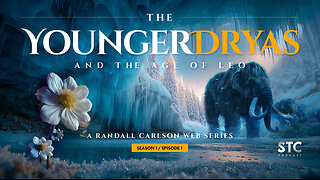Premium Only Content

Exploring the Celestial Sphere: Constellations and Asterisms
In our previous discussion, we examined the horizontal coordinate system as a means to locate celestial objects. Today, we shall delve into the organization and identification of these celestial phenomena. Utilizing Stellarium, an advanced observatory simulation program, we can recognize familiar patterns such as the Belt of Orion, Taurus, and the Pleiades (commonly referred to as the Seven Sisters).
To articulate these patterns, the term constellation is employed. For instance, Orion’s Belt, encircled by stars that delineate a rectangular formation, represents the shoulders and feet of the mythological figure Orion. Another classification of these patterns is termed an asterism, which includes formations like the V shape present in Taurus or the Belt of Orion. Asterisms may encompass multiple constellations, yet both constellations and asterisms are merely patterns observable from our distinct vantage point on Earth.
The mythos surrounding Orion, which spans various cultures, illustrates humanity’s enduring connection to the stars. As light pollution increasingly obscures our view of the night sky, we risk losing this profound connection. By recognizing constellations and asterisms, we can strive to preserve this link.
In my application of Stellarium, I have demonstrated constellations, their corresponding artwork, and methods to identify key stars such as Aldebaran, Betelgeuse, Rigel, and Sirius. Numerous star names derive from Arabic and Greek origins, highlighting the rich tapestry of astronomical history.
In 1922, the International Astronomical Union (IAU) established standardized boundaries for 88 constellations through the use of right ascension and declination. Contemporary star charts, such as those provided by Sky & Telescope, assist in locating these constellations and their prominent features.
For example, Ursa Major, commonly referred to as the Big Dipper, serves as a navigational aid in understanding the official boundaries of constellations and notable celestial objects within them, including galaxies and nebulae.
Accessible resources, such as the night sky maps from NASA’s Jet Propulsion Laboratory, can facilitate the initiation of stargazing endeavors. When utilizing these maps, it is advisable to avoid night blindness by refraining from the use of bright light from mobile devices, thereby enhancing the experience of exploring constellations and asterisms with the naked eye.
I encourage you to continually gaze upward and relish the opportunity to discover these celestial wonders.
-
 1:33:48
1:33:48
CCoH
1 day ago $1.43 earnedWes Craven: The Mastermind Who Rewired Horror | Coffee Chat of Horrors
13.1K4 -
 10:23
10:23
Forrest Galante
9 hours agoAsking an Indian Billionaire Why He Is Saving 1 Million Animals
79.4K19 -
 LIVE
LIVE
Lofi Girl
3 years agolofi hip hop radio 📚 - beats to relax/study to
142 watching -
 6:14
6:14
PistonPop-TV
2 days ago $38.36 earnedThe VW 07K: The Indestructible Five-Cylinder with Lamborghini DNA
38.8K9 -
 11:40
11:40
ThinkStory
23 hours agoFRANKENSTEIN Ending Explained!
33.7K7 -
 33:05
33:05
ArturRehi
2 days ago1,000 Shahed Drones Explode at the same time in a BEHEMOTH FIREBALL in Donetsk
38.9K9 -
 15:36
15:36
JohnXSantos
1 day ago $3.87 earnedHow To Design A Luxury Clothing Brand With A.I (From 0-$100+)
32.8K -
 1:55:13
1:55:13
The Kevin Trudeau Show Limitless
4 days agoHow To Pray To Get Results!
34.4K17 -
 1:17:46
1:17:46
Squaring The Circle, A Randall Carlson Podcast
1 day agoRandall Carlson Defines The Younger Dryas
30.8K10 -
 40:03
40:03
WanderingWithWine
7 days ago $6.13 earnedBuy a Home for Less Than a Car? 5 Italian Homes for Sale in Puglia
28K6